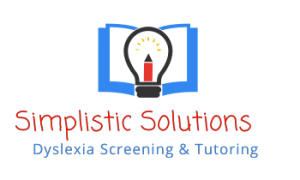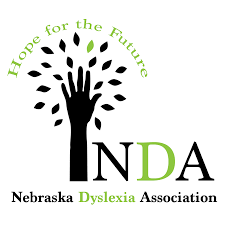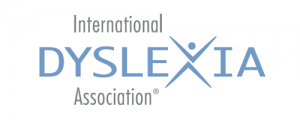- A Description of the A-Z Reading Program
A-Z Reading is an alternative style of learning to read that is based on Project Read and Orton Gillingham. The A-Z Reading program rests on three educational principles important for all students and vital for dyslexic students: direct instruction of the concepts and skills of language, a systemmatic sequence of concept instruction, and the use of multisensory strategies, materials, and activities. This mainstream language arts program includes reading decoding, reading comprehension, and grammar for speaking and writing.
- Student Selection for A-Z Reading Instruction
A-Z Reading was designed for learners who, for a variety of reasons, demonstrate auditory and/or visual discrimination and/or memory problems when processing written or oral language. An A-Z Reading child is a child who learns best through a systematic or “step by step” approach using multisensory learning experiences.
- The A-Z Reading Instructor
The classroom teacher, the Title 1 teacher, a Special Education Teacher, or a one-on-one tutor may deliver the A-Z Reading instruction to students. The A-Z Reading program was designed as the basic reading program for the at-risk reading group in each classroom. However, the program is flexible enough to be used in almost any setting. Many lower grade teachers find that this type of instruction is important for their whole class. In some places, classroom teachers adapt the A-Z Reading program for use as their whole class spelling program. Also, parents often take the training and work with their own children at home.
- A-Z Reading Teacher Training
Graduate credit college classes for teachers are offered each summer through area colleges. Teachers wishing to audit the classes who are willing to commit to completing all the assignments required of credit students may, in some cases, be accepted by special arrangement with the instructor and by paying a $50 audit fee. In addition to using the program with their own students, teachers trained in these summer classes may then serve in their own schools as an A-Z Reading demonstration teacher. A classroom teacher is trained by having an A-Z Reading teacher come into the teacher’s classroom and demonstrate the curriculum and strategies with that classroom teacher’s reading group. Throughout each school year, A-Z Reading skills are refined, reinforced and expanded through the continued support of this demonstration A-Z Reading teacher.
- Content of the A-Z Reading program
A-Z Reading encompasses the same three basic areas included in most good reading programs: decoding, writing, and comprehension. The emphasis in grades 1-3 is on systematic phonics (step by step) “learning how to read.” The method uses a multisensory approach (“seeing”, “hearing”, and “feeling”.) The multisensory techniques compensate for memory problems and allow the student to learn through experiencing the instruction as well as hearing and seeing it. In grades 4-6 the same phonics system is maintained and the emphasis is on developing comprehension and writing — “reading to learn”. A-Z Reading teaches the same skills as other reading methods, but the difference is that each concept or idea is directly taught. A-Z Reading makes the abstract concepts concrete.
- Grades covered by the A-Z Reading Program
A-Z Reading especially targets first through sixth grade students, and is often continued through Junior High and High School for special education students. Many kindergarten teachers also use the program. - Usual Percentage of Students Needing A-Z Reading Instruction
15 to 20% of the Elementary population, 5% of the Junior High population.
- “Graduating” from A-Z Reading Instruction?
The intent of A-Z Reading is not to phase children out, but to make them independent learners by using a method that matches their learning style. (Analogy: When a child’s vision is impaired, he gets glasses. When he can finally see with the help of the glasses, one doesn’t take his glasses away!) However, many students do reach a level of proficiency which allows them to join their classmates in the regular classroom basal instruction.
- How long has A-Z Reading been in existence?
A-Z Reading is based in part on Orton Gillingham and Project Read. Orton Gillingham programs were developed many, many years ago. The Project Read program, based on Orton Gillingham, was developed by Tori Greene and Dr. Mary Lee Enfield in the Bloomington, Minnesota Public School system in 1970, and it has continued in use there since that time. Bloomington is a part of Minneapolis, Minnesota.
- Some of the schools in which teachers are using A-Z Reading:
St. Stephen the Martyr Catholic School, Omaha, Nebraska
Sherman Public Elementary, Omaha, NE
Lost Creek and other Schools in Columbus, Nebraska
St. Matthews Catholic School, Bellevue, Nebraska
Wayne Public School, Wayne, NE
Kearney Public Schools, especially Special Ed Programs
St. James/Seton Catholic School in Omaha
Many individual teachers throughout the state
- Using A-Z Reading to help students to better meet State Standards
The A-Z Reading program corresponds to state language arts standards, and through concrete, multisensory teaching practices enables the successful acquisition of the underlying structure of our language in reading decoding, reading comprehension, and writing.
A-Z Reading is highly successful for teaching Reading and Spelling to At-Risk kids because it uses:
1. Multi-sensory Instruction (VAKT)
2. Direct Concept Teaching
3. Systematic Sequence
4. Active Participation
A-Z Reading** is desperately needed for perceptually handicapped learning disabled students, but it also works well for slow learners, late bloomers, and students who are “falling through the cracks” and not qualifying for special help. It is designed to be used by the classroom teacher with the 20 % of the students who are not successful using traditional reading instruction techniques. A-Z Reading is also very useful for Title I Reading Instruction, Special Ed, one-to-one tutoring, and for parents wishing to work with their own children.
A-Z Reading is a multisensory approach to teaching language arts skills in the regular classroom. It was specifically designed for learning disabled children. As the program developed, it became increasingly apparent that these children, who need an alternate approach in learning to decode, also needed to acquire the skills for comprehensive reading through a structured multisensory approach. As children move into the second and third grades, the emphasis shifts from the mechanics of our language to comprehension skills, but the major goal remains, i.e., to help a child acquire skills which allow him to function at an independent level with all aspects of reading. The A-Z Comprehension program teaches the different skills needed for comprehending both fiction and non-fiction. Rather than testing comprehension, which tends to be the focus of many comprehension programs, A-Z Comprehension directly teaches the various skills students must use to comprehend what they read. The writing program emphasizes the grammar instruction needed for speaking and writing. Rather than teaching these skills in a vacuum, as many English programs do, A-Z Grammar for Speaking and Writing uses symbols and helps students develop ever more complex sentences based on pictures rather than on worksheets of endless sentences that carry little meaning for the student.
The program may be implemented through A-Z Reading demonstration teachers, who have been trained in this specific educational technology. They, in turn, train regular classroom teachers in this same technology, through demonstration teaching and in-service consultation. A unique and strong part of the program is in the training of the regular classroom teacher so that she can teach her own students that have special learning problems. Current reading research emphasizes that classroom teachers who are directly taught decoding, comprehension, and writing skills are more effective in training their students in these areas. Especially important for teachers is a clear understanding of the basic structure of words and sentences, and a in-depth knowledge of the sound/symbol basis of the English language. A-Z Reading instruction carefully builds this knowlege for teachers, helping them to internalize this information and instill this knowledge base in their students.
A-Z Reading is cost effective. The cost per A-Z Reading student is about 10% of the cost of funding a special education “pull out” program. It reduces the number of students referred to special education. Many students who need this approach can be taught by the regular classroom teacher.
Children have made remarkable progress. Controlled studies yield results that are statistically significant. Behavior problems are diminishing and the self-concepts of children and teachers are more positive, as children who once were failing are now learning. Children, teachers, parents, and administrators are enthusiastic. To quote one second grader, “It’s a feeling of joy when you can read good.” Another second grader said, “Once I was dumb, but now I’m smart.”
What better evaluation could there be?





